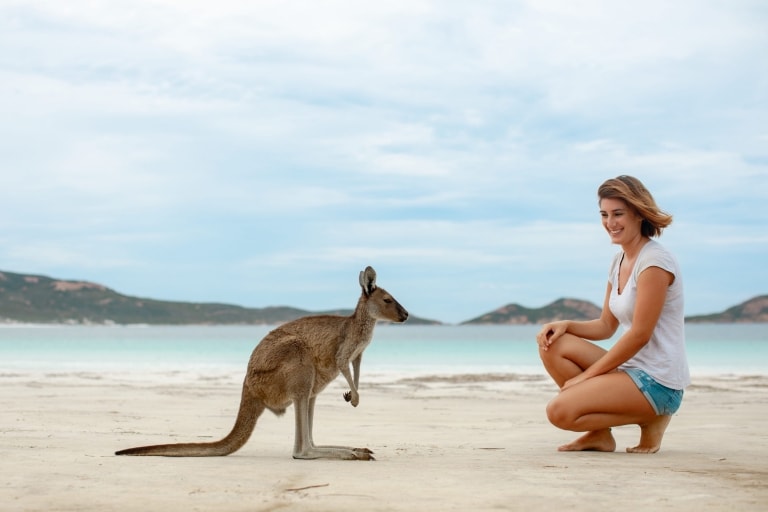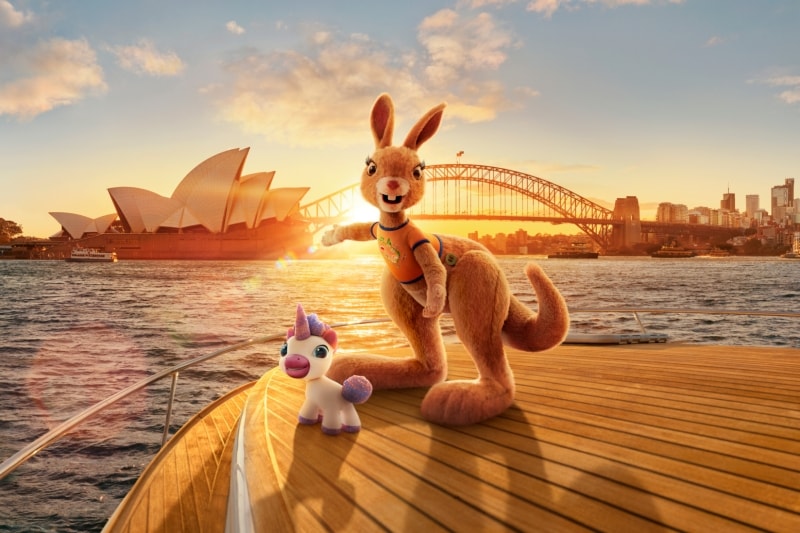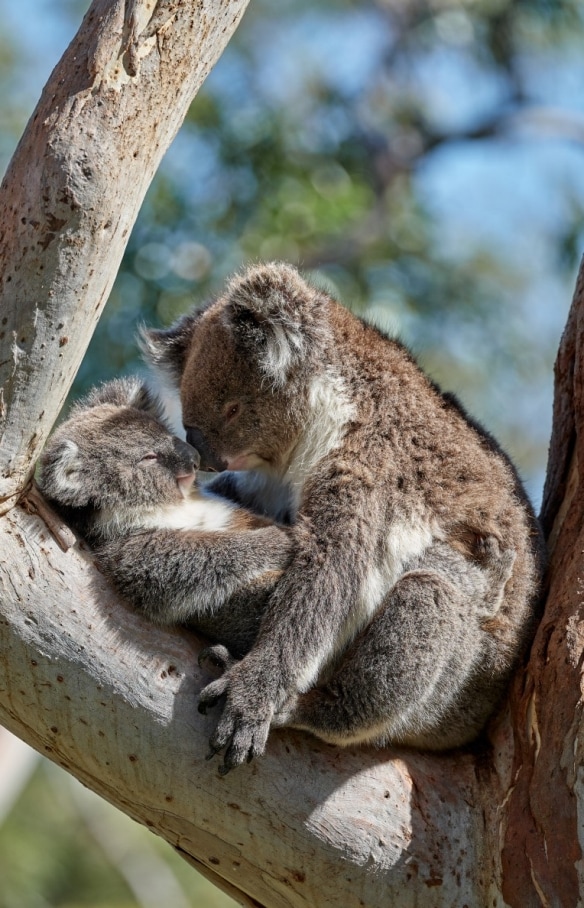
Lucky Bay, Esperance, Western Australia © Tourism Australia
Top tips for viewing wildlife in Australia
Australia's animals are like nowhere else, so it's no wonder spotting them in the wild is so special. Here's how to increase your chances of a wildlife encounter.
Seek local advice
Seek local advice
Aussie locals are experts on the wildlife found in their own backyards. Ask a friendly local about the types of animals found in the area, and when or where you can best spot them. Tourist information centres can also help to steer you in the right direction. Of course, the easiest way to find wildlife is to hire a guide or book a tour with a reputable company such as Boutique Wildlife Tours.
Do your research
Do your research
Before you hit the road with your binoculars, it’s a good idea to read up on the animals you’re hoping to spot. Find out if they are seasonal visitors, and what type of habitat they prefer. Many animals or birds are drawn to water, so staking out a position near a creek or waterhole often pays off. Scan the treetops for creatures mid-flight, or scan the ground for the likes of sun-bathing lizards.
Be prepared
Be prepared
Bring the right equipment to navigate our Aussie landscapes: sturdy shoes, a hat, a water bottle, sunscreen, insect repellent and comfortable clothing are all a good idea. Add a pair of binoculars to bring your animal-viewing to life, or a red-light torch for night expeditions. From snorkelling on the Great Barrier Reef to koala-spotting on the Great Ocean Road, guided tours will often have your gear at the ready, so you don't have to worry about packing it.
Pack the right lens
Pack the right lens
Many animals can be captured beautifully on a smartphone camera, but if you want to level up your souvenir wildlife shots, a telephoto lens is the ultimate accessory. Budding photographers can take advantage of epic wildlife photography tours ranging from the wetlands of Kakadu National Park to the wilds of Tasmania. Above all, don't forget to put down the camera and simply savour being in the company of wildlife.
Hit the countryside
Hit the countryside
You’re unlikely to spot a kangaroo hopping through the centre of Sydney, but once you reach the outskirts of our cities, you can expect to find many more animals roaming around. Some of our richest wildlife hotspots are in national parks and nature reserves, and these are great places to take a quiet bushwalk looking for animals. In regional areas, you may even share a round of golf with wild kangaroos, who love to hang out on our courses.
Go wildlife-spotting at dusk and dawn
Go wildlife-spotting at dusk and dawn
The hours after dawn and before sunset are some of the best times for spotting wildlife. Many animals and birds forage for food when the sun is low, avoiding the hotter part of the day. Listening to the bird calls of the “dawn chorus” in the Australian bush is unforgettable; go camping or upgrade to a night of glamping to immerse yourself in this experience. If you're driving at these times, take extra care of wildlife crossing the road.
Be quiet and patient
Be quiet and patient
When searching for wildlife, it pays to reduce your noise. Travel in a small group, speak softly and switch your phone to silent mode. Once you’ve spotted wildlife, it’s often a good idea to crouch low to make yourself look smaller. If you’re lucky and the animal feels safe, it may resume relaxing or even choose to come closer.
Be respectful of wildlife
Be respectful of wildlife
Don’t forget that wildlife is just that – wild. For your own safety, animals should never be approached too closely. Maintain a respectful distance and never feed any wild animal. This will give you the most authentic experience and is also best for the critters in your company.




































































































































































